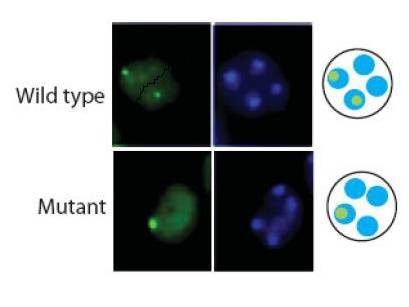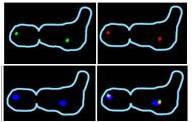“Postdoctoral position is available for a highly motivated person with a good academic record.
Expertise in molecular biology will be preferred.“
The molecular mechanisms ensuring accurate chromosome segregation during meiosis and mitosis are critical to the conservation of euploidy. Errors in these processes lead to dire consequences like cancer, infertility and congenital disorders. My group is interested in elucidating the factors responsible for successful execution of these two cell division processes.
Eukaryotic cells undergo sexual reproduction through a cell division called meiosis. In this process where a genome is reduced to half, a single round of DNA replication is followed by two consecutive rounds of chromosome segregation called meiosis I (MI) and meiosis II (MII). Faithful meiotic chromosome segregation relies on three unique events which are found to be conserved form yeast to mammals. First, homologous chromosomes (paternal and maternal) pair and recombine to form chiasmata where one of two sister chromatids from two homologues are physically attached. Second, both the sister kinetochores of one homologue become monooriented so that they can capture microtubules emanating from the same spindle pole. Third, sister chromatid cohesion established during premeiotic DNA replication, must be removed in a stepwise manner. During anaphase I of meiosis I (MI), arm cohesion is dissolved allowing homologues to segregate from each other and go to opposite spindle poles, but sister chromatids remain paired and segregate together to the same pole because cohesion at the centromeres and pericentric regions is protected from dissolution. During anaphase II of meiosis II (MII), this remaining cohesion is dissolved and sister chromatids segregate from one another. Error in these events leads to production of aberrant gametes leading to birth defects and spontaneous abortion. My group is interested to address how these meiotic specific events are correctly executed.
An understanding of the mitotic cell division process is of significant importance to cancer research since mutations in genes that regulate cell proliferation have been directly linked to human cancers. My group is also interested in identifying the factors that regulate faithful entry and exit from mitosis.
Segregation of a GFP marked homolog of chromosome V during meiosis in the wild type and kinetochore mutant. In the diploids one copy of the chromosome V is tagged with GFP (green) and nuclei of the cells are stained with DAPI (blue). In the wild type the GFP dots are segregated normally to the sister spores whereas nondisjunction occurs in the mutant.

We want to pursue another area of research where we ask what are the strategies adopted by the selfish DNA elements in propagating in the host population. Endogenous 2 micron plasmid of budding yeast, a classic paradigm of selfish element, will be used as a model system. 2 micron plasmid has been used successfully for many years by the researchers all over the world as a stable vector for steady expression of homologous and heterologous genes in yeast. The principle behind the high stability of this plasmid in yeast population is believed to be because of interplay of two plasmid in-built systems, partitioning and amplification. Partitioning system leads to equi-partition of the replicated molecules between mother and daughter cells during cell division. A drop in plasmid copy number due to subtle missegregation triggers amplification system ‘on’ which restores the copy number. We will address how these two systems act in tandem to give rise near chromosome like stability of this plasmid. This study will show how minimal strategies can be used for stable propagation of extrachromosomal genome and outcome knowledge can be adopted in developing stable eukaryotic vectors.
Sister-sister mode of segregation of the 2 micron plasmid.
Two different plasmids are marked differentially with GFP (green) and RFP (red) and nuclei are stained with DAPI (blue). Plasmid utilizes cohesin to couple its segregation with that of the chromosome.
